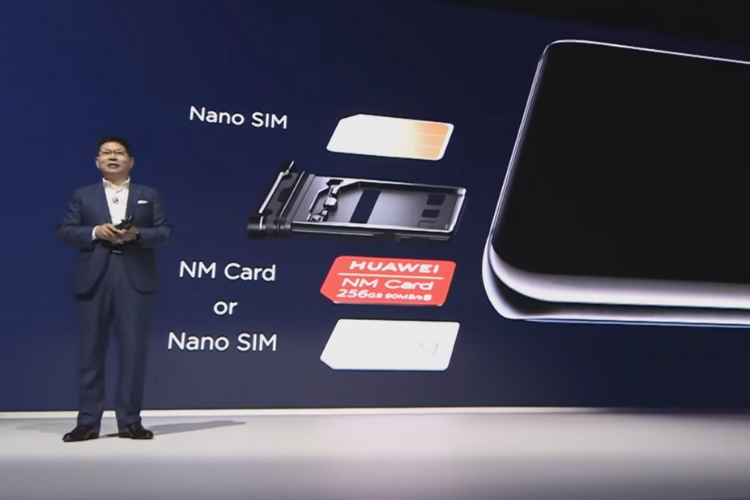Earlier this month, US President Donald Trump signed an executive order that effectively banned Huawei from conducting business with the US, and firms based in the US. That was a big deal, but its real repercussions started showing up over the next few weeks, and day by day, Huawei has been hit with bans and restrictions from US technology giants, and even non-US firms; restrictions that could cripple the Chinese technology giant, and restrictions that show just how dependent manufacturers are on US technology, especially in the world of consumer electronics.
Operating Systems
When you think about operating systems, there are basically only two in the world of smartphones — Android and iOS. Both of which are developed, maintained, and controlled by US technology giants Google and Apple respectively. Without access to operating systems that are ruling the market, it’s nearly impossible for a product to survive, let alone compete in the global market, no matter who built it.
Companies have tried and failed to compete against Android. Amazon tried with the Fire Phone, Samsung tried with Tizen, and remember the Nokia of old? Android killed Symbian too. As of April 2019, Android has a market share of 74.85%, with iOS coming in second with 22.94% share of the smartphone market. That’s a total of 97.79% of the entire smartphone market in the hands of two technology companies.

The United States’ ban on Huawei led to Google restricting Huawei’s Android license, stripping the company of the right to install Google apps on its phones, or getting Android updates until they’re added to AOSP. That’s a big deal.
Sure, Huawei is working on its own smartphone operating system, HongMeng, and it’s reportedly built on AOSP, which means Android apps should run just fine on it, but competing against other companies that can offer the full might of Android with all of Google’s apps that have become so essential to our daily workflow will be tough for Huawei, regardless of what HongMeng turns out to be like.
But there’s more.
Huawei also makes laptops, and really good ones at that. However, Microsoft has removed Huawei laptops from its official store, and while the company hasn’t stripped Huawei of its Windows license yet, it just might, which would mean Huawei will need to rely on another OS for its laptops as well.

Even if Huawei builds its OS for laptops as well, competing against Microsoft and Apple will be a mammoth task for the company. The market share equation comes into play here as well. As of April 2019, Windows has a market share of 79.45%, followed by macOS, with a market share of 14.05%. That’s 93.5% of the market in control of Microsoft and Apple — both US companies. Even after those two major operating systems comes Linux with 1.63% market share and Chrome OS with 1.24% market share. Guess what? The Linux Foundation is based in the US, and Chrome OS is a Google owned operating system.
Processors
I know what you’re thinking, Huawei makes its own processors, and that’s true. The Kirin chipsets in Huawei phones are their own, but the architecture they use is designed by ARM — a UK based company. Not just Kirin, Snapdragon processors also use ARM architecture cores. Any time you look at the specs for a processor, you’ll see Cortex mentioned there — that’s ARM.
Since ARM is a UK based company, a US ban shouldn’t make a difference, but ARM reportedly itself thinks that a lot of its technologies to be of US-origin, and the company has, in fact, ceased business dealings with Huawei and its subsidiaries after the US imposed ban. Without ARM’s CPU architecture prowess, developing a smartphone processor will prove to be an uphill task for any company, even a gigantic firm such as Huawei.
Storage
Take a look inside the P30 Pro, like iFixit did, and you’ll find that the storage Huawei is using is made by a company called Micron — one that’s based in the US, and one that has also suspended shipments to Huawei.
Fortunately for Huawei, companies such as Samsung might be able to supply storage for its phones, and Huawei itself might be working on smartphone storage as well, so this might not be as big an issue as the rest of the bans are.
What might be a big issue, as far as storage is concerned, is the fact that the SD Association — which defines standards for SD cards and microSD cards has also kicked Huawei out of the group, which means future Huawei phones won’t be allowed to use any of the standards set by the association. Effectively, this means that Huawei can’t give microSD support on its future smartphones, and SD card support on its future laptops.

Yes, Huawei has its own smartphone storage in the form of its Nano memory cards, but they’ve not caught on much since the company announced them with the Mate 20 series, and chances are that they won’t.
Connectivity
More importantly than storage, the world’s top two smartphone brands — Samsung and Huawei — both use LTE and 3G modems that are made by US companies. That obviously means that these modems are probably the best that are available in the industry, and without access to these modems, Huawei’s phones might not be compatible with a whole bunch of networks.
Speaking of networks and connectivity, the WiFi Alliance has also suspended Huawei as a member, if only temporarily, but if the US imposed ban isn’t sorted out quickly, Huawei might have trouble with its future phones not being able to support WiFi standards.
SEE ALSO: Huawei Ban: Everything That’s Happened So Far
Smartphones May Be Assembled in China, But US Technologies are at Their Core
Most of the consumer electronics we see and use are made in China, but many of the technologies that make these devices what they are, depend on US companies, either directly, as is the case with operating systems, or indirectly, as is the case with ARM and processor architectures. Clearly, a US ban on any brand can easily put a big dent in the company’s future prospects of even existing in the global consumer electronics market; Huawei just happens to be the company Donald Trump chose to make his target.

















